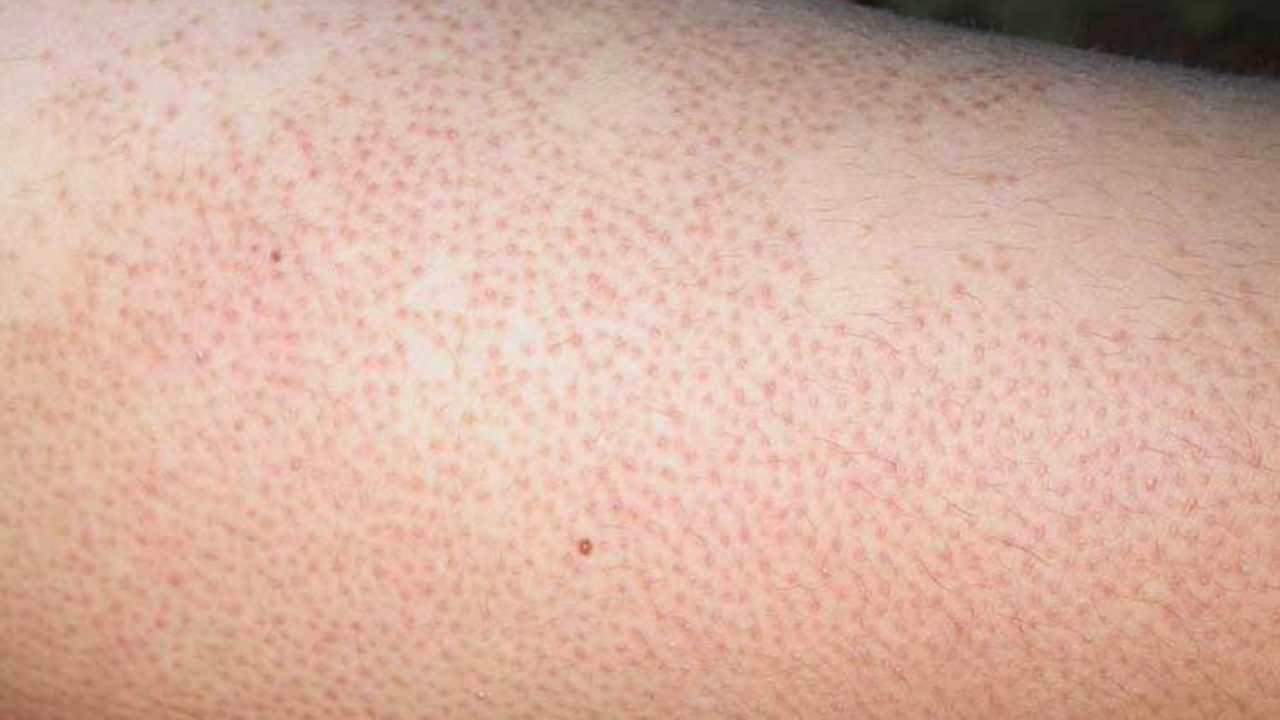
Understanding Keratosis Pilaris: Causes, Symptoms, and Treatment Options
Keratosis Pilaris (KP), also known as "chicken skin," is a common skin condition characterized by small, rough bumps on the skin. These bumps typically appear on the arms, thighs, cheeks, and buttocks and are often harmless. The condition results from a build-up of keratin, a protein that protects the skin from infections and harmful substances.
Causes and Risk Factors
While the exact cause of keratosis pilaris is unknown, several factors are thought to contribute to its development:
- Genetics: KP often runs in families, suggesting a genetic component. You are more likely to develop KP if one or both of your parents have it.
- Skin Type: People with dry skin or eczema are more prone to developing keratosis pilaris. The skin's tendency to become dry can exacerbate KP symptoms.
- Age: Keratosis pilaris is more common in children and teenagers but can occur at any age. It often improves or resolves with age.
- Weather Conditions: KP may worsen in cold, dry weather due to the drier skin conditions associated with these climates.
Recognizing Symptoms
Keratosis pilaris is easily recognizable by its unique features. The primary symptoms include:
- Rough, Bumpy Skin: The condition is characterized by tiny, painless bumps that resemble goosebumps or chicken skin. These bumps are often red or flesh-colored.
- Dry Skin: The affected areas may feel dry and rough.
- Mild Itching: Some individuals experience mild itching in the affected areas, although this symptom is not always present.
- Sandpaper-Like Texture: The skin may have a sandpaper-like texture due to the bumps.
Diagnosis
Healthcare providers can typically diagnose keratosis pilaris by examining the skin's appearance and symptoms. No specific tests are required to diagnose this condition. However, it's essential to consult with a healthcare provider to rule out other potential skin conditions.
Management and Treatment
While there is no cure for keratosis pilaris, several treatments can help improve the appearance of the affected skin. Management options include:
Topical Exfoliants
Regular exfoliation can help remove dead skin cells and improve skin texture. Over-the-counter topical treatments containing alpha hydroxy acids (AHAs), lactic acid, salicylic acid, or urea can be effective.
- Lactic Acid: Available in creams and lotions, lactic acid helps soften and smooth coarse, scaly skin. AmLactin is a popular brand that contains lactic acid.
- Salicylic Acid: This ingredient helps exfoliate the skin and reduce redness and swelling. Products such as CeraVe SA Cream can be helpful.
Moisturizers
Keeping the skin well-moisturized is crucial in managing keratosis pilaris. Look for moisturizers that contain urea, glycerin, or hyaluronic acid, which can help retain moisture in the skin.
- Hydrating Creams: Use products like Eucerin Advanced Repair Cream.
Prescription Treatments
For more severe or persistent cases, a healthcare provider may prescribe stronger topical treatments, such as retinoids:
- Retinoids: These vitamin A derivatives can help unplug hair follicles and smooth out the skin. Prescription retinoids include tretinoin and adapalene.
Gentle Skincare Routine
Adopting a gentle skincare routine can help manage symptoms:
- Mild Cleanser: Use a gentle, fragrance-free cleanser to avoid irritating the skin.
- Avoid Hot Water: Hot showers and baths can dry out the skin. Use lukewarm water instead.
- Gently Pat Dry: After bathing, gently pat the skin dry instead of rubbing.
Home Remedies and Lifestyle Tips
- Humidifier: Use a humidifier in your home to add moisture to the air, especially in the winter.
- Gentle Exfoliation: Exfoliate gently with a washcloth or sponge. Avoid harsh scrubbing.
- Avoid Tight Clothing: Wear loose-fitting clothes to reduce irritation to the skin.
- Avoid Picking: Resist the urge to pick or scratch the bumps, which can worsen inflammation and lead to scarring.
Prevention
While keratosis pilaris cannot be entirely prevented, the following practices may help minimize its severity:
- Maintain a Skincare Routine: Regularly exfoliate and moisturize your skin.
- Monitor Skin Conditions: Manage underlying skin conditions like eczema or dry skin to prevent aggravating KP.
- Stay Hydrated: Drink plenty of water to keep your skin hydrated.
Prognosis
Keratosis pilaris is a chronic condition that may persist for years. However, many people notice an improvement in symptoms with age. While treatment can improve skin appearance, symptoms often recur if treatment is stopped.
Living With Keratosis Pilaris
When living with keratosis pilaris, managing the condition often involves understanding that it's a benign cosmetic issue. Seeking treatment can enhance confidence and comfort in your skin.
Additional Resources
For more information on keratosis pilaris, visit the following resources:
Feel free to consult with a dermatologist or healthcare provider for personalized advice and treatment options as needed. By following appropriate skincare routines and treatments, you can manage the symptoms effectively and improve the appearance of your skin.

Identify Skin Conditions Instantly
Try Rash ID for Free